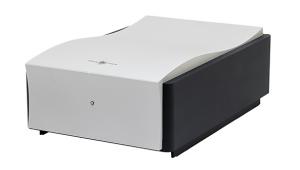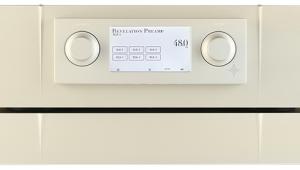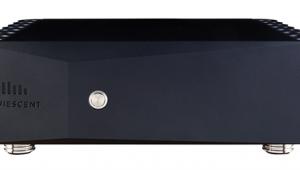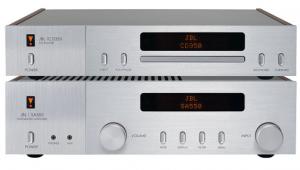Bryston 4b Sst2 (£4000)
There’s a reassuring matter-of-factness about the design and construction of Bryston’s amplifiers. While they might lack a little glamour – there’s no frivolous dressing up to impress – there’s an understated purposefulness to the marque’s range that has brought the company considerable success in the professional arena since it first began making amplifiers in 1973. Countless professional sound studios around the world employ Bryston electronics for 24/7 amplification duties thanks to the company’s acclaimed quality control and reputation for reliability.
In the world of high-end hi-fi manufacturing, boasting to be somehow connected to the worlds of medical and/or the aerospace industries adds a certain cache to a brand, conjuring up images of hard science and meticulous attention to detail. Funnily enough, in Bryston’s case the company really did begin as a Canadian manufacturer of blood analysis equipment in 1962. The company came under new ownership in ’68 and developed its first audio amplifier five years after that. And it’s justifiably proud to boast that a couple of years ago a bulletproof Bryston amplifier, its three-channel 6B SST model, was selected by NASA to power a sound system at its Glenn Research Center (GRC) Hearing Protection Device (HPD) Evaluation Laboratory.
BURN BABY, BURN
In the UK Bryston electronics have been distributed by PMC since 1993, just two years after ex-BBC engineer Pete Thomas first set up his Professional Monitor Company. In studio environments PMC speakers are often partnered with Bryston amps needless to say, moreover Bryston-sourced amp modules can be found inside PMC’s active monitors. Employing design ideas trickled down from the flagship 28B monoblock, Bryston’s entire range has recently undergone a revamp and all models are now dubbed SST2. As before, all signal circuitry is fully discrete to avoid what Bryston refers to as ‘the compromises, phase shift and non-linearity inherent in ICs’. Power amplifiers range from the 2B stereo unit rated at 100W per channel through the 3B (2x150W), the 4B that we have here (2x300W), 6B (3x300W), massive 7B 500W monoblock featuring a switch allowing the output stage to operate in a parallel (current) or series (voltage) mode to drive really difficult speaker loads, the monstrous 14B (2x500W) and truly gargantuan 28B monoblock rated at 1000W. All models are available in silver or black finish with a choice of 17in fascia or 19in faceplate with handles. Also available are 19in rack mount faceplates.
As Bryston insists that all amplifiers require individual power supplies for audiophile performance, this stereo 4B model features two custom made toroidal transformers and multiple filter capacitors in each of its power supplies. Improvements over the previous SST generation include a reduced circuit board count and reduced point-to-point wiring, new soft start circuit and push on/off power switch, new transformer design and power supply board and redesigned output chokes. New signal grounding arrangements obviate the need for the ground lift switch provided on the rear panel of the previous model to eliminate ground loops where present in multi-product installations.
BRAWN AND BRAINS
Driving the 4B SST2 with a matching BP26 preamplifier from Bryston [see HFN May ’07] gave the Monitor Audio PL300 floorstanders currently residing in my listening room the biggest workout of their lives. To the annoyance of family members I simply couldn’t help thrashing the PL300s to within an inch of their lives, such was the sense of effortlessness and lack of obvious compression delivered by the 4BSST2. No matter how hard I drove the system I got the feeling this Bryston power plant wasn’t even breaking into a sweat.
Not for a minute was this a case of all brawn and no brains, mind you. The 4B SST2 is not without finesse. Hugh Masekela’s blistering trumpet on ‘Coal Train’ from the live album Hope [Triloka Records TRICD 82020] was reproduced both with crystal clarity and subtle tonal shading. The drums and bass of Masekela’s backing band were delivered in magnificent fashion, with immense dynamics and power. I’ve rated Monitor Audio’s PL300s most highly since first hearing them, but until this point I had never heard them stop and start with such precision.
FAST AND LOW
This impression of dynamic quickness continued as I listened to familiar tracks used for reference. Leonard Cohen’s densely-packed ‘By The Rivers Dark’ from Ten New Songs [Sony 5012022] contains extremely low bass notes that can overwhelm many replay systems. The Bryston amp took it in its stride, allowing subtle details in the female backing vocals and electronic keyboard fills to be heard with ease despite Cohen’s closely-miked vocal and the fulsome bass of this recording.
EMI Classic’s recording of Richard Harwood’s cello sonatas [EMI Classics 094635964523] showed that this amplifier has the ability to resolve fine detail in spades. Variations in timbre and texture were clearly resolved during the performance, the piano accompaniment locked firmly in place within the recording venue. Not once did I notice the crushing of dynamics as the intensity of the piano playing increases – so often observed when I play this album – while the resolution of reverberation tails helped provide a wonderfully deep image of the recording space.
VERDICT
More than simply workmanlike, the sound of Bryston’s 4B SST2 is highly lucid and infectiously engaging. With its lack of ‘grain’ and tremendous clarity it will have you discovering subtle details in recordings that may previously have gone unnoticed. You’ll require speakers that are up to the task, of course. Given its 20-year warranty you can buy it with confidence.
Originally published in the June 2009 issue



















































